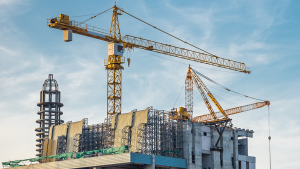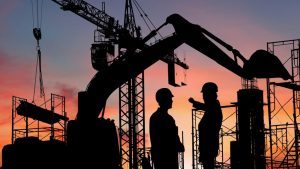Edmonton International Airport is embarking on a $1 billion expansion. Paul Garbiar, vice president of Infrastructure and Technology for Edmonton Airports, noted that passenger growth has consistently grown, so expansion of the terminal and parking facilities are now needed.
Infrastructure
Edmonton International Airport is embarking on a $1 billion expansion.
The move is designed to ensure that the facility remains competitive and can welcome an increasing number of people coming to live and work in Canada’s northernmost major city.
Alberta’s oil boom has driven growth not only in the construction industry but in practically every other aspect of Edmonton’s economy.
More and more people are arriving in the northern city not only to head north to the oil fields, but for a myriad of other jobs that have become available as the province’s boom continues.
The Edmonton International Airport, built decades ago for a city centered on government work and agriculture, isn’t up to the rapidly increasing demands being placed on its infrastructure.
Paul Garbiar, vice president of Infrastructure and Technology for Edmonton Airports, noted that passenger growth has consistently stayed in the double digits, meaning it has now become necessary to expand the terminal and parking facilities much more quickly than previously expected.
Total traffic was up 17 percent year-to-date as of November 2006, and in August 2007 alone the airport handled more than 600,000 passengers, a record for the facility.
The airport’s expansion will consist of $1 billion invested over a three-phase process which, when completed, will allow the facility to serve nine million passengers a year.
“In addition to an expansion to the south terminal, we’ll also be constructing new offices and a new tower. We’re in the early stages of engineering for the expansion, but some of the main focuses will be around increased food, beverage and retail. The expansion west of the central hall to accommodate the new offices and control tower will add approximately 1,500 square metres of food, beverage and retail facilities,” Garbiar said.
Of course along with increased foot traffic, the airport will also need to address parking issues, and over 1,000 new stalls are being added to the existing facility.
“In 2008, the parkade expansion will be complete, with a new 4,000 stall park and ride facility, and construction of a new hotel is also tentatively scheduled to begin in early 2008,” Garbiar said.
The hotel, a 192-room Marriot, is part of the expansion, but the costs are not part of the $1 billion budget, and will instead be borne by developer Concord Hospitality Enterprises Company.
Increased passenger capacity also means much more foot traffic to and from airplanes, and 13 new bridges will be constructed to and from the new southern hammerhead terminal, so named because of its unique shape. And because more planes will arrive and depart from the airport, the expansion will also include new apron space, the area where planes park to load and unload cargo, baggage and passengers.
Though there is steep competition for skilled labour throughout Alberta, Garbiar said the airport project is sufficiently different from other in-demand areas that they haven’t as of yet run into problems finding workers.
“Rising construction costs and labour are certainly a concern. But although we compete with the oil sands groups for these resources indirectly, the airport industry is more on the commercial than the industrial side of things,” Garbiar said.
He added the Edmonton Airport was looking forward to forming alliances with “key engineering, architectural and construction companies that have demonstrated the capability to carry projects of this size.”










Recent Comments
comments for this post are closed